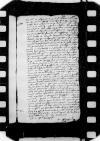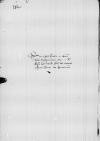Letter #1995
Ioannes DANTISCUS to Tiedemann GIESEHeilsberg (Lidzbark Warmiński), 1538-11-22
English register:
Dantiscus informs Giese of the messenger’s return from the [royal] court. He sends Giese the King’s [Sigismund I Jagiellon’s] letter for perusal, and also a letter he received a little earlier from the Queen [Bona Sforza], containing accusations against Dantiscus. He intends to write a reply to the Queen the next day, enclosing a letter written from last year’s Graudenz (Grudziądz) Diet. He is counting on the Queen understanding that what happened was not his fault, that it was [Stanisław] Kostka who acted against the King’s earlier decision, and that since the other lords and towns [of Royal Prussia] consider this to be acceptable, then Dantiscus cannot protest either.
Dantiscus declares that unless the Council of Royal Prussia comes to his defence, in future, when others abandon the public good in favour of their own interests, he will assume a reserved attitude as well. First, however, he wants to know what Giese and the voivodes think. Unless [the Prussians] take care of their own affairs, they will be doomed.
[Stanisław] Kostka has just sent Dantiscus a royal decree ordering the delivery to Marienburg (Malbork) of tax money of which Dantiscus has not seen a teruncius (Pol. trojak). He expects Giese has also received the decree for perusal.
He asks if the King’s letter to Giese says the same as the one to himself. He does not doubt that the letters to the other senators are the same. Unless others respond, he too will be forced to conceal his concern [for the public good].
Dantiscus forwards letters from [Nikolaus] Nibschitz (Nipszyc) and [Stanisław] Hozjusz (Hosius) to Giese as well as the King’s letter containing the previous decision on delivering the money. He asks for Giese’s opinion on the matter.
Soon, in accordance with Georg Hegel’s calculation, he will send Giese 54 florins and 38 grosz.
Manuscript sources:
Prints:
| ||||||||
Text & apparatus & commentary Plain text Text & commentary Text & apparatus
Reverendissimo in Christo Patri et Domino, domino
Reverendissime in Christo Pater et Domine, frater et amice carissime ac honorande.
[C]ommendationem solitam.
Postquam laetos hos dies[1] hic absolvimus, rediit heri
Habui etiam paulo ante et cf.
Si domini
Hac hora
Scripsit dominus
Cui paulo post iuxta
Cupioque eandem diutissime feliciter valere et vivere ex animo.
Ex
Dominationis Vestrae Reverendissimae deditissimus frater
[1 ] laetos hos dies i.e. the wedding of Dantiscus’ sister Catherina von Höfen to Hans Glaubitz (see cf.
[2 ] In their letter to
[3 ] Teruntius (Pol. trojak), small silver coin minted in the
[4 ] scriptum i.e.

